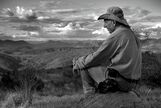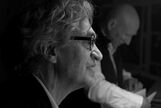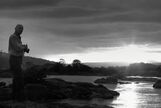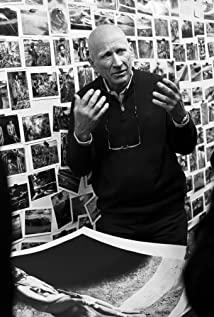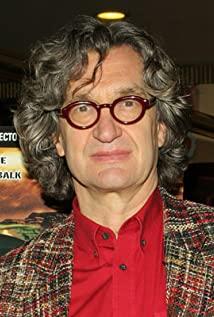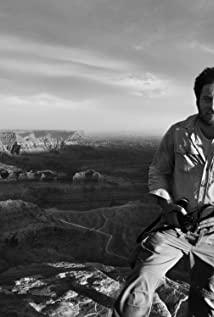at the beginning of the film, the German director told us: "photograph" is explained from the Greek etymology, photo means light, and graph means painting and writing, so the photographer writes with light people.
Similarly, if we explain the word "photography" from a Chinese perspective, it seems that we can get a glimpse of the meaning of photography itself. "Shadow" in photography is a noun, referring to images, patterns, and scenery. "Photography" is an action, a process of incorporating, recording, and presenting "shadows". Because this "photography" is done by people, it is inevitable that it has a personal subjective color, and what kind of "shadows" are touched by it ; what kind of "shadow" to choose as the object of "photography"; what attitude and emotion to hold; what means, techniques, and ways to express this "shadow", this process and any one of them The links are all spaces for photographers to interpret and recreate.
As Sebastian said in the film, when a group of photographers are gathered to face the same object - "shadow", each person's final work is different, because each person's growth environment, life Experience is different.
The difference in growth environment and life experience leads to each person's unique aesthetic experience and meaning space.
As a result, each photographer's work will have his unique label, imprint and ethos. When we look at a frame of photo, we are not only looking at the "shadow" that was captured and framed, but also at the personal aesthetic taste and spiritual palace that the photographer shared with us in this "shadow" and worldview.
With enough sophisticated equipment and a period of skill training, it seems that it is not too difficult to shoot postcard-like photos. It is rare to shoot a moving work, just like the director will cry when he sees Sebastian's blind girl. work.
I think when we say that a photographer is great, it doesn't mean how skilled and skillful his photography skills are, but more about the compassionate and caring soul behind the camera. With that kind of mind, you will have the inner observation when facing the "shadow", the resonance with the "shadow", the reconciliation and gratitude, and finally you will have the power developed from the inside and outside, and when people watch it. , the soul resonated with it, and then moved and cried.
In fact, the perspective and way of viewing and describing the world is not the way we live. Sebastian's greatness is due to his devotion and reverence for all things. With such humility and devotion, he can empathize with the photographic subjects he faces. At each "decisive moment" when he pressed the shutter, what he lingered on was also his personal experience of life at that moment. This kind of empathy made him feel that his soul was seriously ill when he left because he had seen too many people's hunger, poverty, disease and death when he was shooting African refugees and exiles. camera, I would cry for what I saw." Therefore, after turning to nature photography, he often thinks: what was I in the past? a tree? a bird? Or a pebble?
2. The photographer's eyes
The most impressive part of the film is the arrangement of the director's interview with Sebastian: let Sebastian face each of his works, and tell the work according to the timeline of his photography project The story behind it, the camera should be placed in the same direction of his work, so in the end we see that Sebastian seems to be telling his story face to face with us, and the distance between the mid shot and close-up also feels like a friend's. Long talk.
Those are the eyes of a photographer who has gone through the vicissitudes of life and the sorrow of the years, full of benevolence and compassion, old but pure and innocent, always tugging at your heart.
Those are a pair of photographer's eyes, which are different from ordinary people's.
Those are the eyes of a pair of photographers, the eyes of a pair of old people full of wind and frost stories, and the eyes of a pair of benevolent people with deep compassion and concern.
Facing the last group of walruses on the earth, what he saw in his eyes was: their teeth of different shapes and sizes were like Dante's purgatory; three children lying on the ground in an African refugee camp, what he saw in his eyes were: 2 The eyes of the child are full of longing for life, while the eyes of another child are dim, he is dying; facing an old tortoise, he can see the silent prestige in its eyes full of life experience, like an old man with a candle; Photographing whales in the sea, what he saw was a whale that was more than 30 meters long. In order to protect their boats several meters long, they only swayed her huge and beautiful tail from a distance; on the farm where he grew up, he saw that each surrounding mountain has a different history and stories.
When Sebastian decided to switch from social documentary photography to landscape photography and nature photography, his friends advised him not to do so, because he had to face completely different photographic subjects. In fact, because there are such a pair of minds that observe life and eyes that are good at discovering. What Sebastian touches with his eyes and feels with his heart is the landscape, the landscape of life and the landscape of human nature.
No photographer's work and his eyes have more story and power.
So, in the film, we can see that those eyes appear, disappear, appear, disappear behind each of his own works...
At the beginning of the film, the director said that it is difficult to shoot a photographer Yes, because the person who usually holds the camera suddenly has to face someone else's camera, and it is difficult for him to get used to it. It is impossible to speculate whether the director was forced to do it or designed it intentionally. Anyway, what we see finally presented to us is that Sebastian is face to face with us (of course, he is actually facing his own work.) ), we were able to gaze into the eyes of a great photographer and see his humble, loving heart through the window of the eyes. I believe that when a photographer faces his work, all his reactions and expressions at that moment are the most natural and sincere.
The photographer's wife
I don't know if it was the influence of Song Fatty's song, but I think the girl named "Lilian" must be the most beautiful and pure girl with noodles in clear soup. Sebastian's Lilian is indeed like that. There are not many pictures of her in the film, all of which have unforgettable beauty, bright and sweet smile, and big eyes sparkling. At first, she bought a camera for the study of architecture, but unexpectedly, it made Sebastian's photography life. She was the first "shadow" in Sebastian's lens. On the way back, she thought that maybe it was her smart beauty that opened up Sebastian's beauty experience and triggered his love for photography.
She is Sebastian Mei's enlightenment, the starting point of photography, and a solid backing and strong support for Sebastian's career. When returning home, Lilian raised her son while working and studying at home, and at the same time spared no effort to contact the publisher to promote it, so that Sebastian's works in the future could finally meet the world and he himself could create freely without distractions and explore the boundaries of the soul. .
Coincidentally, Ruan Yizhong, the creator of "Man and Land" and a Taiwanese photographer, also has a gentle, sweet and considerate wife who has been with him from his first love to his whitehead. His wife translated for him and assisted him in bringing Western photographers and photographers to Taiwan at the time. I still remember the most moving sentence in his book at that time: "Both of them are first love, and the time together has long exceeded the years of their growth." They
opened up each other's new world, achieved each other, and the opportunity between people And the beauty of connection is nothing but that.
At the end of the film, Sebastian returned to the farm where he grew up and planted trees with Lillian without a word, and finally restored the deserted land due to drought to the shady, shady trees in his childhood memories. Vibrant look. Sitting in the sunshine in the forest, he said: On this land, life goes round and round. It's my whole life with Lillian.
From social documentary to natural scenery, what Sebastian changed was the object of photography, but what remained the same was his deep feelings for the land, his devotion to life, and his personal love for all things.
Perhaps, Sebastian's return to nature is not accidental, perhaps, no matter where the starting point is, we must return to nature in the end. There, our most primitive and original things are hidden, and there is the sustenance and return of our souls. As Mr. Zhuang Ling said: "Let photography naturally present all the visible scenes in the world, and let all the visible scenes return to the boundless nature". More than photography!
View more about The Salt of the Earth reviews



